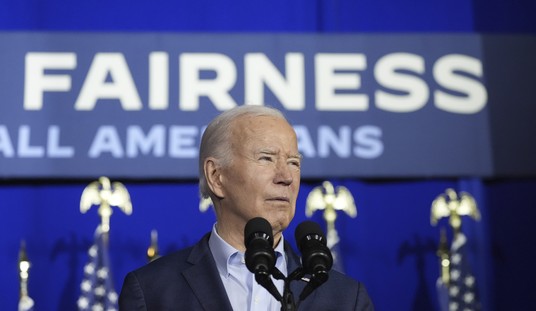We don’t see a whole lot of genuine faith in the movies or on TV these days. Instead, characters who exhibit religious faith in fictional films and programs are more likely to show up as fodder for mocking or as social deviants in disguise. Obviously, we can easily forget that the concept of faith played a much greater role in Hollywood’s earlier days, even in the films made by Disney Studios.
Walt Disney held a deep, private faith in Jesus Christ, though he was not an outwardly religious man. His parents raised him in the theology of the Congregational Church, and he firmly believed in the power of prayer and Bible study. Rarely, if ever, did Disney attend church, but he made sure his daughters were involved in Sunday school programs, even allowing them to choose the denomination that suited them best in their teen years. Walt also said:
I ask of myself, “Live a good Christian life.” Towards this objective I bend every effort in shaping my personal, domestic, and professional activities and growth.
And:
I believe firmly in the efficacy of religion, in its powerful influence on a person’s whole life. It helps immeasurably to meet the storm and stress of life and keep you attuned to the Divine inspiration. Without inspiration, we would perish.
Clearly, Disney understood the importance of faith as part of the American cultural fabric. Another quote of his underscores this fact:
I have watched constantly that in our movie work the highest moral and spiritual standards are upheld, whether it deals with fable or with stories of living action.
We can see these moral and spiritual standards at work in Disney’s classic films. In fact, the concept of faith plays a role in many of the great films of the Disney canon. Today, I’m going to look at five examples of the value of faith in Disney’s classic films: I’m taking a look at two of the big themes that emerge, and then we’ll delve into three characters who exhibit faith in different ways. These movies are not necessarily religious in nature, nor do I claim that they are theologically accurate in any sort of way. With that said, let’s dive in…
5. The Big Themes, Part 1: Miracles
One of the hallmarks of the classic Disney animated film is the presence of supernatural elements. These supernatural beings often conjure up miraculous events, and most of them take place as the result of some sort of faith or belief.
Cinderella enjoys the ball in memorable — let’s call it life-changing — style, thanks to the Fairy Godmother’s handiwork. Dumbo learns to believe in his abilities, proving to himself that he can soar. Of course in Peter Pan, all it takes is “faith, trust, and pixie dust,” and Wendy, John, and Michael take off with Peter Pan and Tinker Bell into the skies over London.
We even see the dead come back to life in Disney films — Snow White experiences the Prince’s kiss, Princess Aurora beats Maleficent’s curse, and Pinocchio’s lifeless wooden body becomes real and living.
These miraculous events come about in one way or another as the result of belief. In other words: miracles don’t just happen — they always require some sort of faith.
4. The Big Themes, Part 2: Good vs. Evil
From Adam and Eve’s sin in Genesis to the ultimate victory over evil in the book of Revelation, the Bible weaves the story of the tension between good and evil. If we wanted to distill the entire narrative of the Bible into one sentence, we could say, “Good triumphs over evil.” That sentiment also pervades the classic Disney films. Walt himself always wanted to ensure that “the moral ideals common to all humanity [were] upheld” in his films, but at the same time he made sure that “the victories [were] not too easy” for his characters:
Even when the film seems to reach its darkest point, there’s always hope — dare we say faith– that the bad guy will meet his or her untimely demise. Whether the villain is Maleficent or Captain Hook, Monstro the Whale or Cruella de Vil, we can count on one thing: good will win out in the end. After all, if the ultimate triumph of good is the theme of the Greatest Story Ever Told, why can’t it work for Disney’s stories too?
3. The Eternal Optimist: Pollyanna (1960)
Poor Pollyanna. She gets a bad rap. Nowadays, people use her name to describe a person with blind — often annoying — optimism. But in Walt Disney’s classic picture, Pollyanna, whom Hayley Mills portrayed, possessed genuine faith that the potential for good was present in any situation — and in every person.
If anyone had the right to be jaded, it was Pollyanna. The orphan girl lived with her stuffy, wealthy Aunt Polly, but Pollyanna carries with her a cheerful demeanor, even in the face of neighbors like the hypochondriac Mrs. Snow.
With her optimism and good cheer, Pollyanna rallies the town to raise funds to build an orphanage, rekindles her aunt’s love for her and others, and even leads the townspeople to lift her spirits when she injures herself and becomes paralyzed. At the end of the film, we find Pollyanna heading off to a hospital in Baltimore armed with the confidence and faith that she will soon be able to walk again.
The apostle Paul echoes Pollyanna’s positive outlook in his letter to the Philippians:
Rejoice in the Lord always. I will say it again: Rejoice! […] Finally, brothers and sisters, whatever is true, whatever is noble, whatever is right, whatever is pure, whatever is lovely, whatever is admirable—if anything is excellent or praiseworthy—think about such things.
Pastor and teacher Matt Chandler says that believers who thrive in their faith dwell on truth and rebuke lies. It is this same confident faith that we see in Pollyanna, and this faith changes a town.
2. The True Believer: Cinderella (1950)
The author of the book of Hebrews defines faith as “confidence in what we hope for and assurance about what we do not see.” Hebrews 11:1 (NIV) We can apply that verse to Cinderella as well, for hers is a story of confidence in unseen hope. Young Cinderella toils at the mercy of her cruel stepmother and wretched stepsisters. She dreams of a life that is better than the one she lives in, and she knows that seeing that dream through requires faith.
Walt Disney once said about Cinderella, “She believed in dreams all right, but she also believed in doing something about them.” Cinderella does put her belief in action by making her own gown for the ball. When the stepsisters rip the gown to shreds, Cinderella enlists her Fairy Godmother — in a true act of belief — to help her go to the ball, even though she only gets to dance with Prince Charming for a short while. However she accidentally leaves a glass slipper behind, setting in motion the Prince’s search for his ideal princess. And when Cinderella tries the shoe on for a perfect fit, we see the culmination of her journey of belief.
Cinderella’s story brings to mind another well-known verse from the New Testament:
And we know that in all things God works for the good of those who love him, who have been called according to his purpose.
Though Cinderella goes through some difficult times — and even considers giving up — she endures these hardships and in the end, her experiences result in the best possible outcome. Both Jews and Christians learn that suffering and adversity often bring about rewards to the faithful, and Cinderella is an example of a “happily ever after” that results when “you keep on believing.”
1. The Redeemed: Pinocchio (1940)
Stories of redemption have been around as long as the written word. In fact, the Bible weaves a tapestry of redemption that runs throughout its pages and spans from the beginning of creation to the ultimate triumph of good over evil — the redemption of God’s faithful followers. The classic animated feature Pinocchio tells its own story of redemption, and it plays out like a powerful metaphor for salvation, even though it’s essentially a kids’ tale — albeit a rather dark one.
The woodworker Geppetto wishes on a star that his latest creation, a wooden puppet he named Pinocchio, would become a real boy. The Blue Fairy brings the puppet to life, promising him that he will become a real boy if he earns it. She grants him a conscience, in the form of the narrator Jiminy Cricket, to help him discern right from wrong. Jiminy Cricket advises Pinocchio to “take the straight and narrow path” and to avoid “the wrong things that seem right at the time.”
Unfortunately, Pinocchio also possesses free will. In spite of his best intentions, he leaves his conscience behind and follows a path of selfish pleasure, giving in to temptation at every turn. When Pinocchio succumbs to temptation, he pays the price over and over again, even turning in to a jackass at the hedonistic Pleasure Island amusement park. Finally, the marionette shows remorse, meets back up with Jiminy Cricket, and attempts to right his situation and return to Geppetto.
When he learns his father has gone out to sea in search of his son and has been swallowed by Monstro the Whale (an episode reminiscent of the Old Testament tale of Jonah), Pinocchio risks his life to ensure Geppetto’s safety, sacrificing himself so his father can live. This act of complete selflessness moves the Blue Fairy to grant Geppetto’s wish, and Pinocchio becomes a real boy.
Many of the elements of the Biblical redemption story appear here: a creator, sin and repentance, a redeeming sacrifice. Jiminy Cricket as Pinocchio’s conscience even represents the Holy Spirit if we view the film through this lens. In this light, Pinocchio’s powerful tale of redemption takes on a moving new meaning.
—
As I said in my introduction, I do not intend to equate these stories with the truths of the Bible, nor do I wish do attribute any theological accuracy to the films. But I do believe wholeheartedly that these elements of faith in the Disney classics are worth noting. They serve as a reminder of Walt Disney’s commitment to Judeo-Christian values, even in stories that never mention God at all. Next week, I’ll take a look at another value we see in Disney’s works. Stay tuned!









Join the conversation as a VIP Member